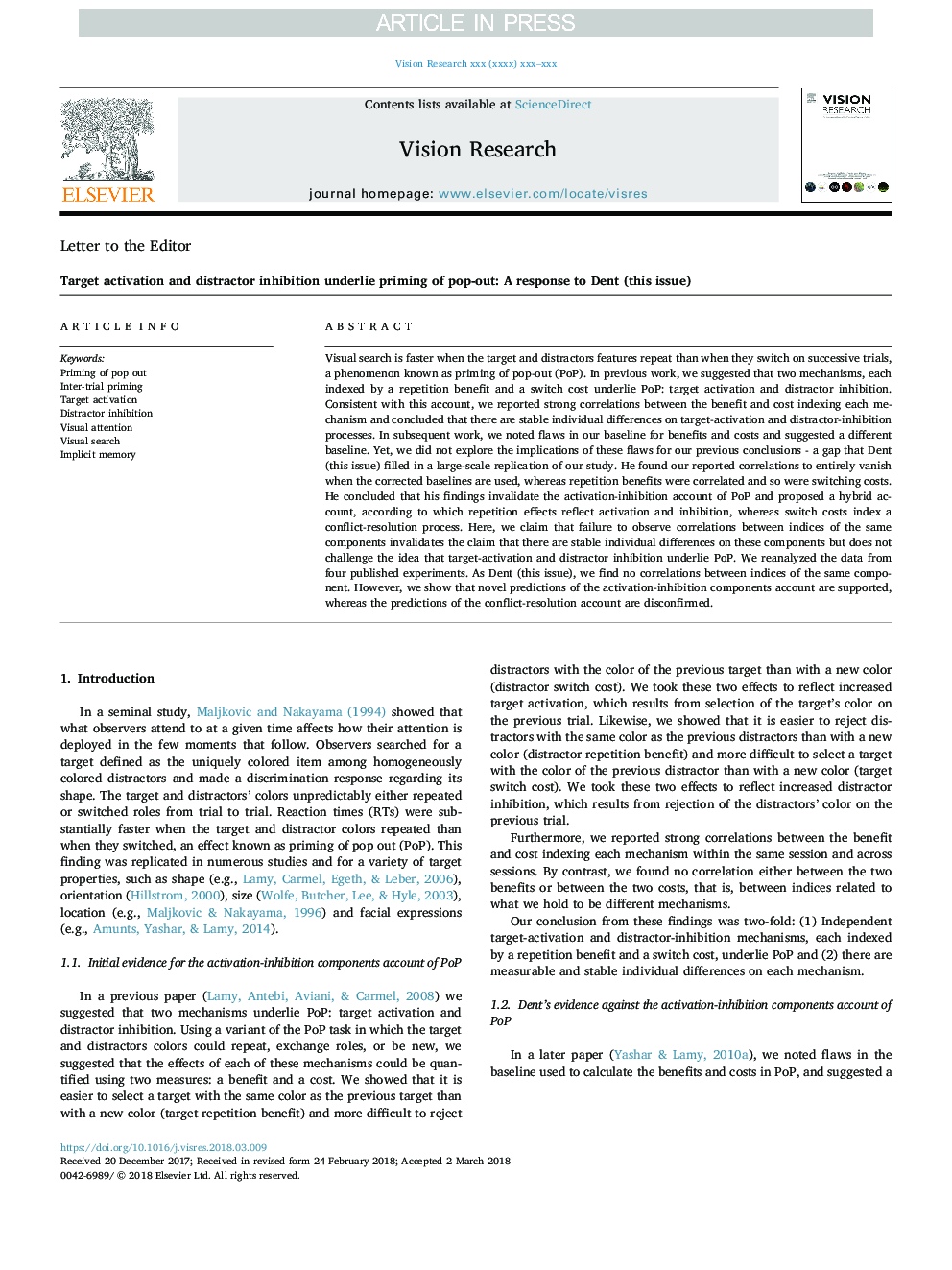| Article ID | Journal | Published Year | Pages | File Type |
|---|---|---|---|---|
| 8795292 | Vision Research | 2018 | 8 Pages |
Abstract
Visual search is faster when the target and distractors features repeat than when they switch on successive trials, a phenomenon known as priming of pop-out (PoP). In previous work, we suggested that two mechanisms, each indexed by a repetition benefit and a switch cost underlie PoP: target activation and distractor inhibition. Consistent with this account, we reported strong correlations between the benefit and cost indexing each mechanism and concluded that there are stable individual differences on target-activation and distractor-inhibition processes. In subsequent work, we noted flaws in our baseline for benefits and costs and suggested a different baseline. Yet, we did not explore the implications of these flaws for our previous conclusions - a gap that Dent (this issue) filled in a large-scale replication of our study. He found our reported correlations to entirely vanish when the corrected baselines are used, whereas repetition benefits were correlated and so were switching costs. He concluded that his findings invalidate the activation-inhibition account of PoP and proposed a hybrid account, according to which repetition effects reflect activation and inhibition, whereas switch costs index a conflict-resolution process. Here, we claim that failure to observe correlations between indices of the same components invalidates the claim that there are stable individual differences on these components but does not challenge the idea that target-activation and distractor inhibition underlie PoP. We reanalyzed the data from four published experiments. As Dent (this issue), we find no correlations between indices of the same component. However, we show that novel predictions of the activation-inhibition components account are supported, whereas the predictions of the conflict-resolution account are disconfirmed.
Keywords
Related Topics
Life Sciences
Neuroscience
Sensory Systems
Authors
Dominique Lamy, Alon Zivony,
